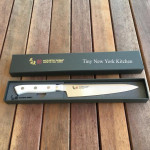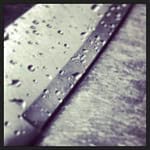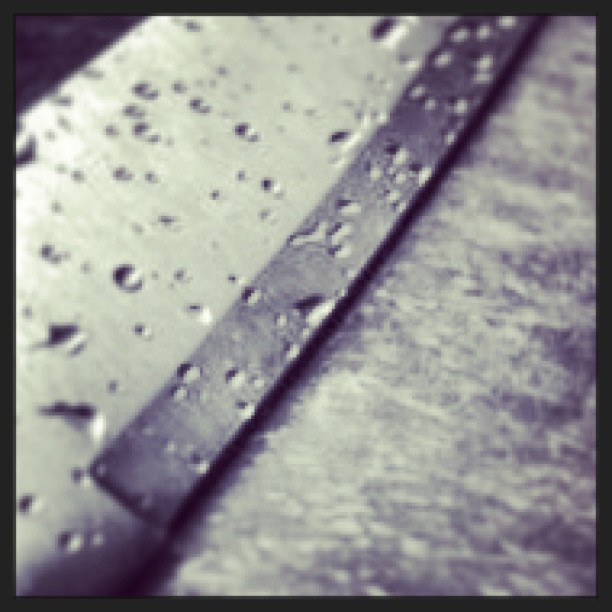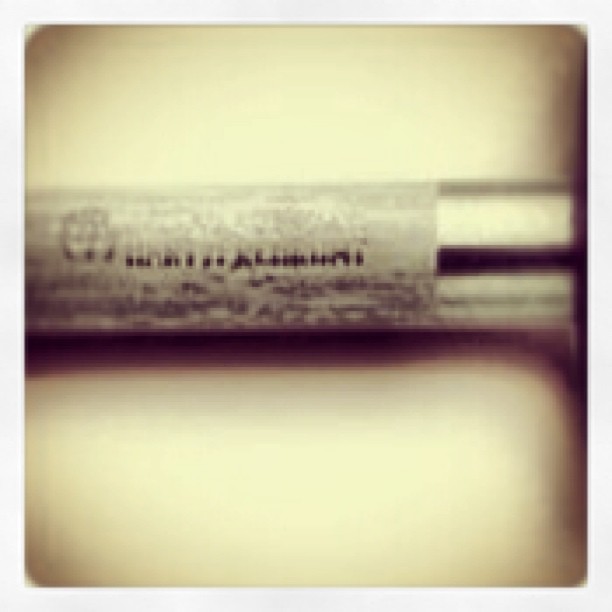Japanese Zanmai Knives Are Some Of My Favorite Knives. It’s always a fabulous day when I get a new knife, but of course I always cut myself straight away. It’s like christening the new knife I suppose, which is why I keep a stack of bandages on the windowsill above the kitchen sink.
I tend to think that the Japanese made knives are far superior to the German made knives. Beyond the essentials, build your collection of knives based on the kind of cooking you like to do. If you roast meat a lot, then a carving knife may be more necessary than a thin-bladed vegetable cleaver.
Start With: 8 Inch Chef’s Knife, 3 1/2 Inch Paring Knife, 9 Inch Serrated Bread Knife
Add: 10 Inch Chef’s Knife, 5 1/2 Inch Santoku Knife (Ceramic Or Metal), Kitchen Shears
Nice To Have: Boning Knife, 9 Inch Carving Knife, Thin Bladed Vegetable Cleaver, Serrated Tomato Knife, 4 Inch Paring Knife.
I often give knives, to people who love to cook, as gifts. Cooking is so much more joyous when you’re doing it with a fabulously sharp knife.
“Work With What You Got!”
© Victoria Hart Glavin Tiny New York Kitchen © 2016 All Rights Reserved
Knives
Whenever you have finished using a knife, you should hone, or sharpen, it briefly with a honing steel before you put it away. The steel, which is a long, metal rod, actually shaves off the tiniest bit of metal to improve the edge. Every 6 months or so, most knives should be sharpened either by a professional or with an at-home mechanical or manual sharpener (such as a sharpening stone).
Knife Set Essentials
Beyond the essentials, build your collection of knives based on the kind of cooking you like to do. If you roast meat a lot, then a carving knife may be more necessary than a thin-bladed vegetable cleaver.
Start With
8 Inch Chef’s Knife
3 1/2 Inch Paring Knife
9 Inch Serrated Bread Knife
Add
10 Inch Chef’s Knife
5 1/2 Inch Santoku (Metal or Ceramic)
Kitchen Shears
Nice To Have
Boning Knife
9 Inch Carving Knife
Thin-Bladed Vegetable Cleaver
Serrated Tomato Knife
4 Inch Paring Knife
The edge of a knife is made at a 20-degree angle. So, to properly hone a knife, hold the knife at a 20-degree angle to the steel and run each side of the cutting edge across and along the steel three or four times.
If you don’t have a honing steel handy, you can use a ceramic plate or mug. Turn the plate over and draw the knife along the edge of the unglazed bottom ring, holding the blade at a steady 20-degree angle. The ring of the plate will turn gray, but it will clean up with the wipe of a moist sponge.
When knives are stored in a wooden knife block, the blades are hidden, which can make it difficult to identify knives that have similar handles. To help distinguish one knife from another, use red or white nail polish to mark the heel of each knife with an initial, i.e., C for carving, S for serrated, or U for utility.









